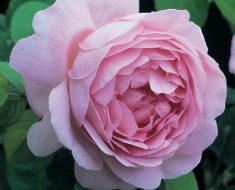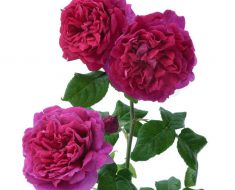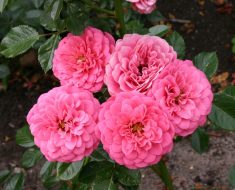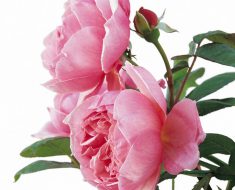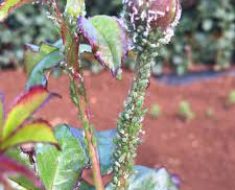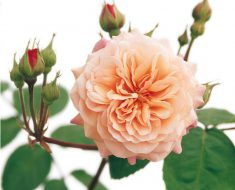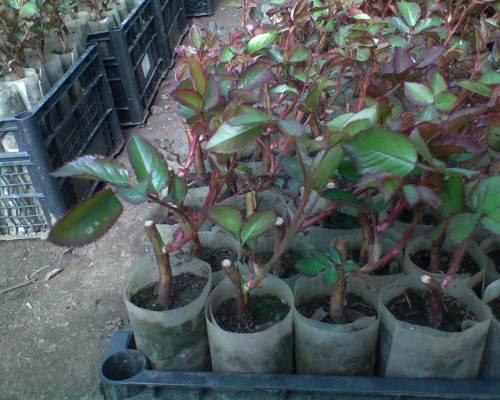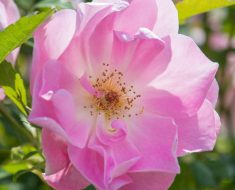Black spotting on roses is one of the most annoying diseases of roses. This disease is able to resist treatment for a long time. She disappears for a while and then reappears. She, like powdery mildew, is an all-weather and ubiquitous disease. Another name is Marsonina Rosae.
How to recognize black spotting on roses
Black spotting on roses provokes the fungus Marssonina rosae. Basically, this infection appears on the leaves, and sometimes on the shoots. In the beginning,form on the upper side of the leaves purple-white spots. Then they become almost black. They have a round, radiant shape. Over time, beds of scabs form on these spots. As a result, the leaves of roses become gray-brown, curl and fall off. For all-about-all, the disease takes 8-10 days. The speed of the disease depends on weather conditions.
Varieties with low resistance to disease, weakened roses by the end of the season become “bald”. With a strong defeat with black spotting, roses lose their leaves, wither, develop poorly, hardly bloom (sometimes they don’t bloom at all). As a result of “baldness”, roses start sleeping buds, from which young shoots grow. They will not mature by the end of the season. In winter, the rose leaves very weak and winters poorly.
The causative agent of Marsonina is very persistent and can even mutate. It is almost impossible to avoid its appearance on roses, but plant health can be enhanced. Weak roses from the beginning of summer are affected by the disease, more persistent can last until the fall.
Where black spots are waiting on roses
All pathogenic organisms are hiding somewhere, waiting for a certain moment to get out and mess up. And Marssonina rosae is no exception. Here are the habitats (pockets of expectation) of black spotting:
- last year’s leaves are the most common carrier of the disease, the
- soil, especially alkaline / slightly alkaline, helps the fungus to comfortably winter
- from the neighbors, or rather, already diseased plants,
- infected plants that we bring
- rain and the wind can also bring black spotting on roses.
Factors affecting the development of the disease
Of course, without the factors that provoke the appearance and development of the disease, it will not be. Or almost never. What launches marsonina?
- High humidity provokes all fungi, and Marssonina rosae also
- abrupt changes in weather conditions: long rains give way to persistent drought.
- Warm, damp weather is an excellent environment for propagating fungi.
- Irregular watering. The disease attacks faster with high soil moisture.
- An excess of nitrogen helps to maim the rose.rose
- Lack of potash and phosphorus fertilizers.
- Dense plantings, especially in gardens, just a paradise for the disease.
- Lack of care.
- Too shaded plantings are a great place to develop ailments.
How to avoid black spotting on roses
The best way is to prevent black spotting on roses . The main rule is that it be systemic, timely and comprehensive. So you will help not only roses, but the entire site.
- Plant roses in well-lit and well-ventilated areas.
- Be sure to cut the plants, and destroy the waste.
- Always keep the soil around the bushes clean and loose.
- roses in a
- Feedtimely manner Water the flowers on the ground – by the area of the root system, and not by the leaf.
- Make soil healthy for roses – use preparations with beneficial bacteria, apply well-rotted manure or compost
- Buy sustainable varieties of roses
- Strengthening the health of roses will help growth stimulants
How to deal with black spotting on roses deal with black spotting on roses
You canusing traditional methods and ready-made drugs. Folk ways to fight Marsonina are not able to fully overcome the disease. They are more likely to heal or temporarily stop the sore. Fungicides of industrial production can cope with it.
To make the treatment of rose bushes more efficient, do this:
- Cut off the diseased parts of the plant.
- Be sure to clean. Spray
- in the evenings in calm, dry weather.
- Carefully moisten the plants with prepared mixtures.
- Be sure to cultivate the soil around your plants.
Folk methods to combat black spotting on roses.
- Infusion or decoction of onion husks: 1 bucket of raw materials is poured with 2 buckets of warm water. After 48 hours, the infusion is filtered. Then add 50 g of laundry soap. Before use, the solution is diluted in half.
- An aqueous solution of iodine: 1 ml per 400 ml of water
- Infusion of mullein. A third of a 10-liter bucket of fresh manure insist three days in 10 liters of water. Then it is filtered. For processing, take 1 part of the infusion and 10 parts of water.
These alternative drugs are used for the first time before budding and repeat the treatment every 7-10 days. They are preventive rather than therapeutic. Infusions act on the disease gently, and on black spotting on roses they act and treat aggressively.
The treatment of black spotting on roses
Marsonina a persistent rose disease. To get rid of the Nee garden, you will need to spend a lot of time. And preventive measures are the initial stage of the fight against the disease. Systemic spraying will help with 3% solution of copper sulfate, Bordeaux liquid, biological products. At the same time, not only rose bushes are abundantly watered, but also the soil around them. This is done when industrial (store) fungicides are used. They are divided into contact, contact-system and system. The former act directly on the fungus, the latter partially penetrate into the plant, and the third create a film on the surface of the plant and penetrate deep into the tissue of the plant.
What drugs to choose? Choose the ones that are available to you. Keep track of their expiration dates. Processing them is carried out at least 2-3 times. After sure, feed your roses.
Other spotting of roses
In addition to black spotting on roses, one can also find similar fungal diseases that provoke various pathogens.
- A variety of roses. Brown spots appear on the edges of the leaves. Over time, they grow to the middle. A characteristic yellow border appears.
- Peronosporosis or downy mildew. The fungus mainly affects the leaves of roses.
- Septoria of the leaves affects the leaves. The spots are initially dark brown, later diseased tissue is lighter, but a thin brown rim always remains.
- Phyllosticosis of leaves is characterized by rounded, scattered, dark brown with a wide purplish-brown border. The border remains, and the fabric becomes ash gray.
- Ascochitic spotting. On the leaves you can see numerous rounded, irregular yellowish-white spots with a thin brown border.
- Purple spotting. Small rounded purple, sometimes black, spots with a wide crimson border are formed on the surface of the sheet. Then the spots brighten in the center to grayish, but the border remains.
- Cercosporiose is recognized by its numerous rounded spots, which are initially dirty brown with a dark purple border. The border of color does not change over time, and spots (1-5 mm) turn gray.
- Brown spotting of roses. Brown spots with a dark border appear on the upper side of the leaves, and light brown without a border on the lower side.
- Leaf spotting. Brown spots grow over time over the entire leaf, sometimes with a yellow or red border.
- Ramolar leaf. Leaves dry and turn brown.
Good luck with your struggle and enjoy growing!
